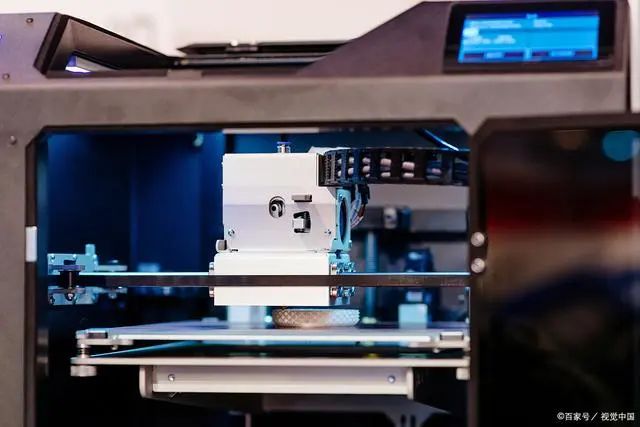Ten steps to master printing quality management
Time:2025-11-04
Views:146
1. Problems should be solved immediately. Don‘t wait until the workers have finished or the final inspection to discover them
If the problem is not solved in the first place, it will eventually lead to defective products, rework and customer returns, and the losses of the factory will be considerable. Strict incoming material inspection and quality control should be implemented and carried out at every stage or process, including the processing of every component and material on the production line.
2. Don‘t pretend if you haven‘t seen the result with your own eyes
Don‘t just tell your employees to do this and that. Some people will follow your advice, but most won‘t. You must constantly use your eyes to see, to check, to correct and to guide. Don‘t just tell your employees what they should do. You should go deep into the front line of the site, observe and check over and over again whether the employees are operating in accordance with your requirements. You must constantly guide and correct your employees until the correct operation becomes their conditioned reflex and their working habit.
3. Don‘t think that having molds and fixtures means no mistakes will occur
If your mold or fixture is wrong, then all the products produced will be wrong. Find a way to design your molds and fixtures so that workers can only place the workpieces to be processed in the only and correct way you have designed. Let the molds or fixtures control the workers‘ operations. Don‘t expect the workers to control the molds or fixtures. Assign the daily calibration of fixtures and inspection of machinery and equipment as a must-do task to a responsible person. The department head must personally inspect and keep records.

4. How do you know?
Don‘t simply take the responses you receive as the correct answers. You must provide continuous training to your employees and witness with your own eyes that they are indeed doing things correctly. Internal audits must be conducted and a sound internal audit system established to ensure that workers comply with the factory‘s standard operating procedures. The laboratory tests conducted within the factory must be scientifically reliable. Moreover, the test records must be traceable to the parts and products on the production line based on the test date and batch number; otherwise, the test results of this laboratory would be no different from those of sample tests. If they cannot reflect the quality level of bulk production, the significance of testing will be lost and the quality of bulk production will lose its guarantee.
5. Never make assumptions
Don‘t wait until problems arise to take action, or think that problems can‘t happen to you. We should find ways to prevent the possible occurrence of problems. Do not rely on "connections" (that is, those you know or are familiar with) to control the quality and stability of the components and materials of suppliers. It is necessary to strictly implement and operate the incoming material quality inspection (i.e. IQC). When necessary, some materials or spare parts need to undergo full inspection. Some materials or spare parts need to be randomly inspected in accordance with the prescribed proportion, while others need to be sent to the laboratory for testing. For those tested in the laboratory, the specific purchase batch, batch number, and the specific contract number on which they were used should be traced. If the test results are not passed, the specific batch of spare parts or raw materials needs to be replaced or discontinued.
6. Apply basic common sense
Many solutions to problems do not require profound knowledge or skills, and many problems can be corrected without spending money. You just need to spend time going to the scene every day and keep observing. Then you can find the solution to the problem. If any action is unreasonable or looks very stupid, it is very likely to be wrong.

7. Create a stable and reasonable working environment to manage your employees and reduce human operational errors
Don‘t expect workers to control the environment. Adopting appropriate methods to make workers‘ work more convenient and easier can thereby improve product quality, enhance the process stability of products and reduce the occurrence of errors. Install padding on all worktops, trolleys, shelves, etc. to minimize damage to parts and products during online assembly and packaging. If the gasket is worn out, it must be replaced in time. Gasket protection should be done well in all the required places, and it is not allowed to have it in some places and not in others. Every required task should be done well and inspected thoroughly. Provide workers with suitable and well-performing tools so that they can do their jobs well, and ensure that workers‘ workstations have good lighting so that they can clearly see what they are doing.
8. Strictly implement the "5S" on site and keep all working areas clean and tidy
Separate the work areas that are prone to generating dust from those that must be kept clean. Require all workers to wash their hands after meals and after using the toilet before returning to work. Before starting work, workers should wear hair covers or work caps to prevent hair from falling onto the products. For certain specific processes, all workers (including managers) are required to wear gloves to ensure that there are no rats or insects in the work area. Before the end of each workday, set aside 10 to 15 minutes for workers to clean their work areas (the cleaning time is included in the working hours and is paid). In this way, when they go to work the next day, they can carry out their work in a clean environment and develop good on-site cleaning management habits among the workers.
9. Empower and encourage your employees at all levels to identify various problems in their work and report them in a timely manner
Encourage and reward your employees to offer opinions and suggestions to prevent problems from occurring, rather than covering up and concealing problems when they are discovered. If employees help the factory reduce waste and labor losses from rework, they should be given material rewards to praise and encourage them. Do not use methods such as intimidation, hierarchical management, fines, abuse, or verbal abuse. If this is done, there will be no one willing to speak or express their opinions, and mistakes will continue to persist, with problems constantly occurring. This management style of open and non-open hierarchy can only start from the top level, and managers at all other levels must also learn it.
.jpg)
10. Set high standards
Whether your clients have requirements or not, you should set high standards for yourself and not make excuses for not being able to produce a "perfect" product. If your goal is 100% perfection and you strive towards it in all aspects, the quality of the final product will be closer to the 100% perfect goal. To pursue high standards and abandon low ones, start with you. From managers at all levels to ordinary workers, everyone needs to change their mindset.














